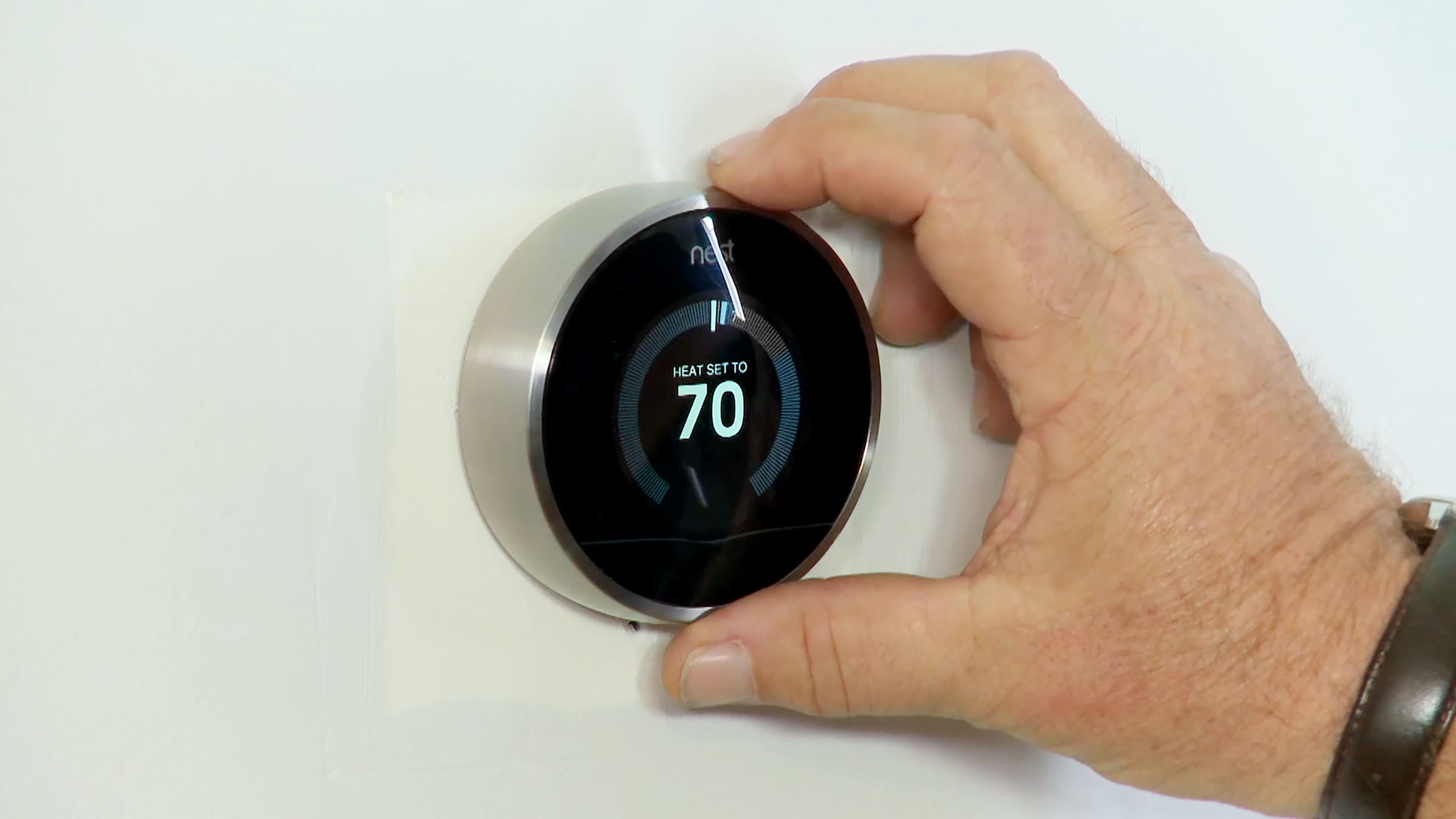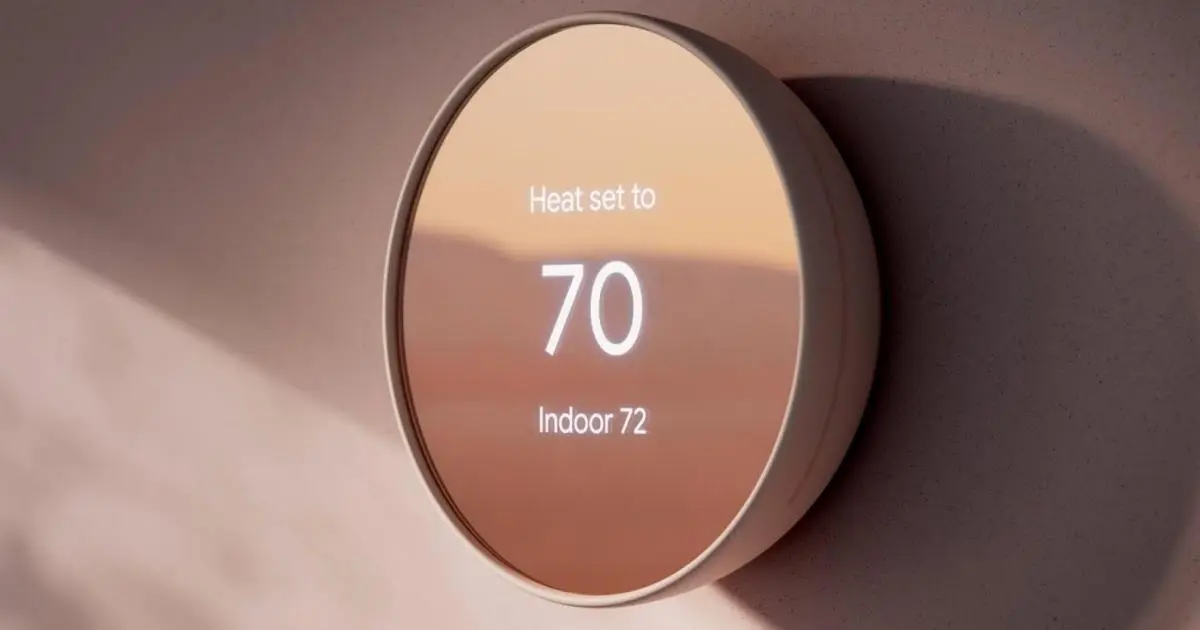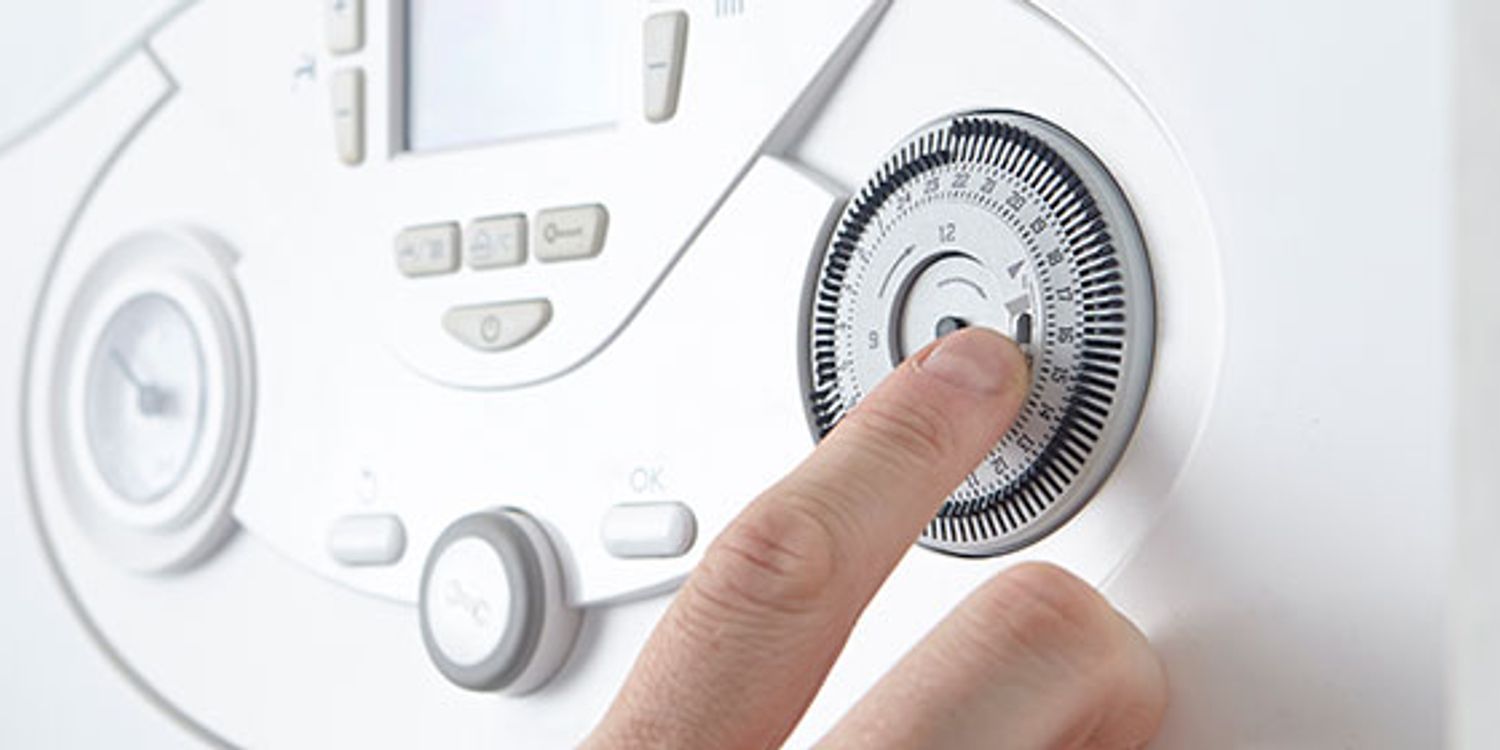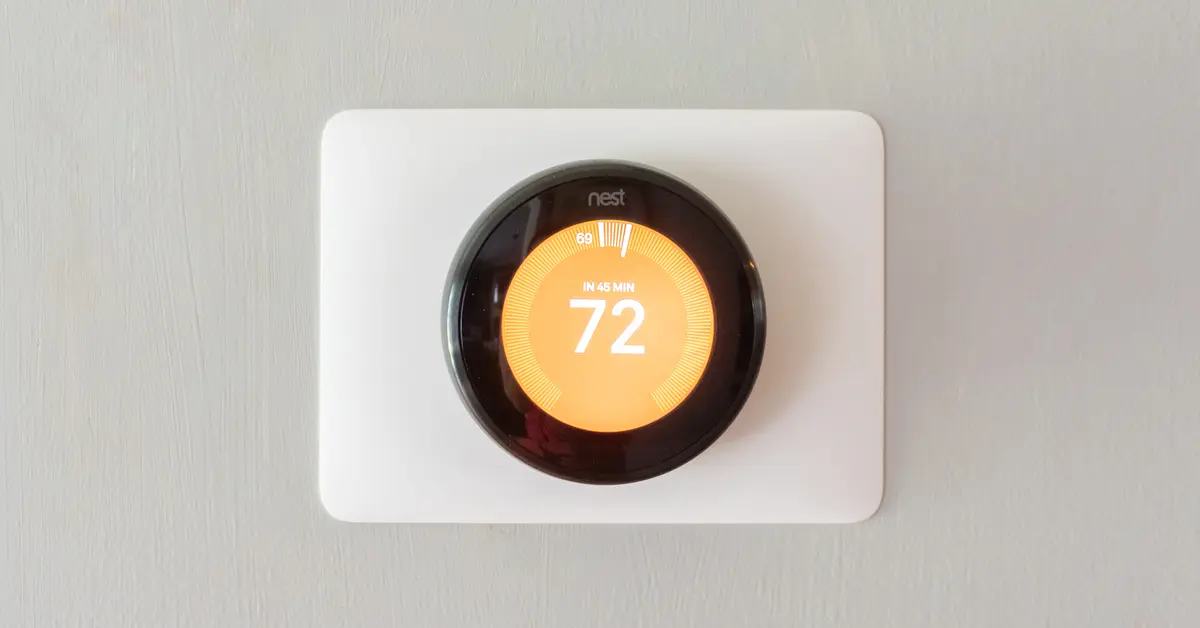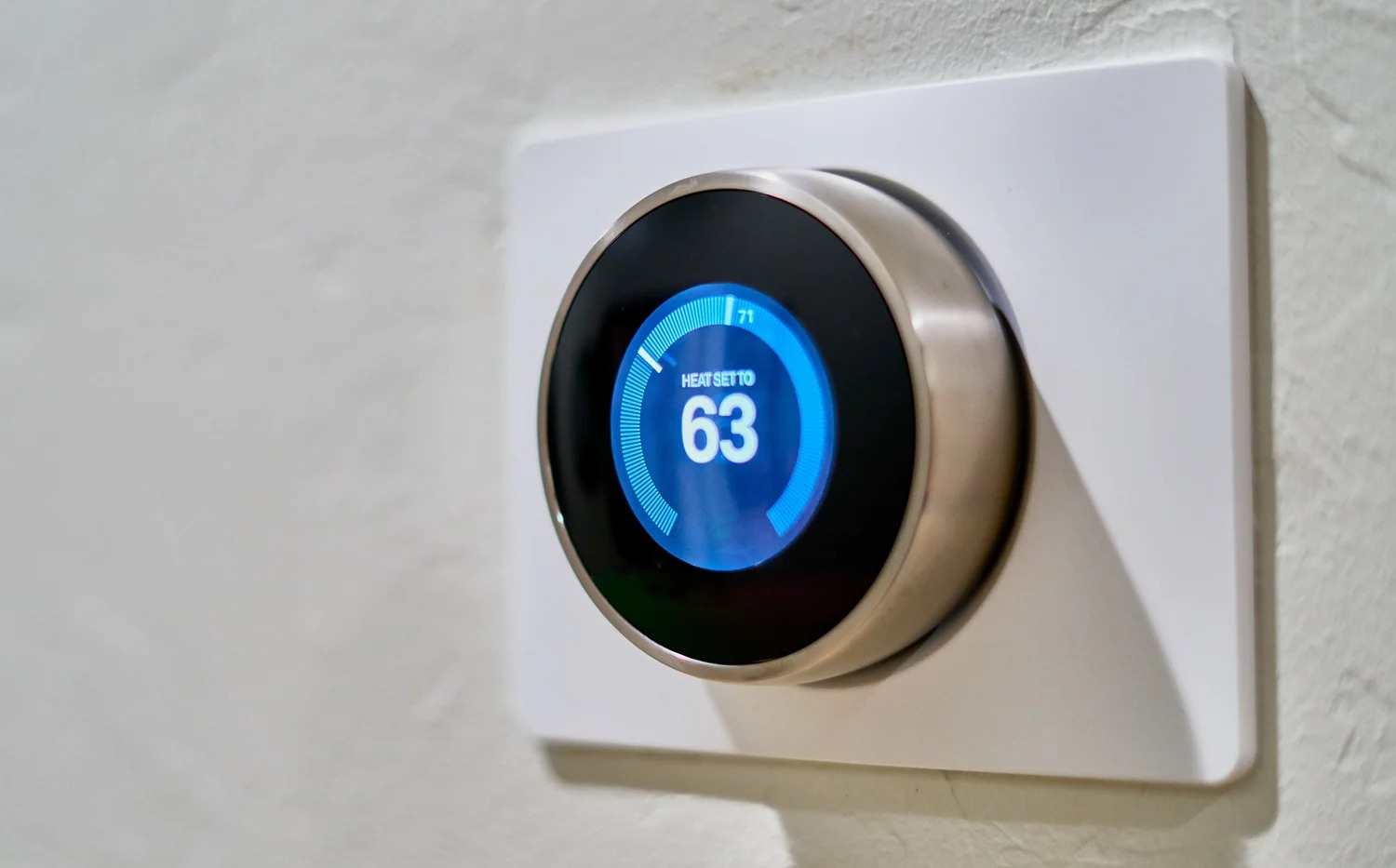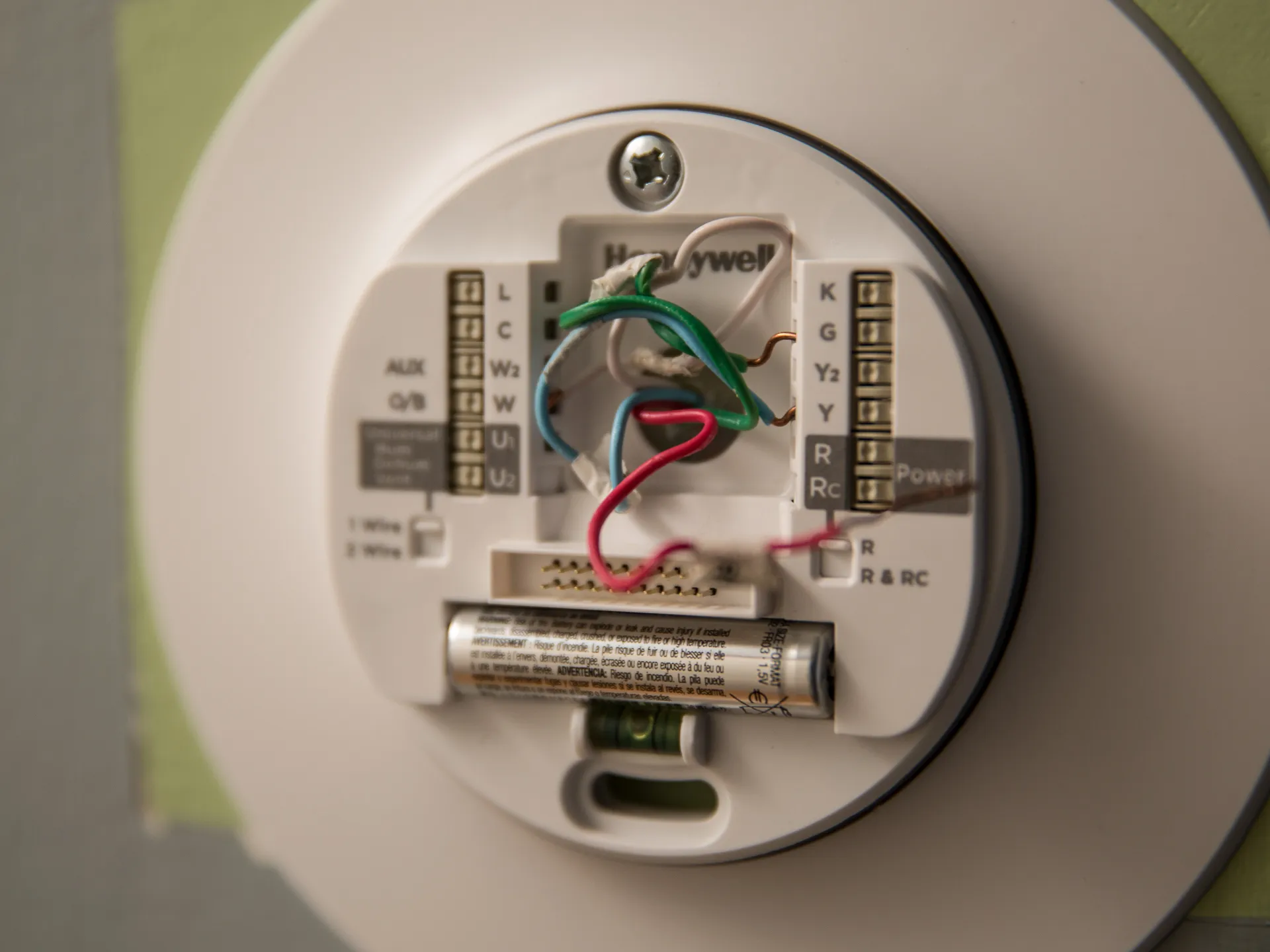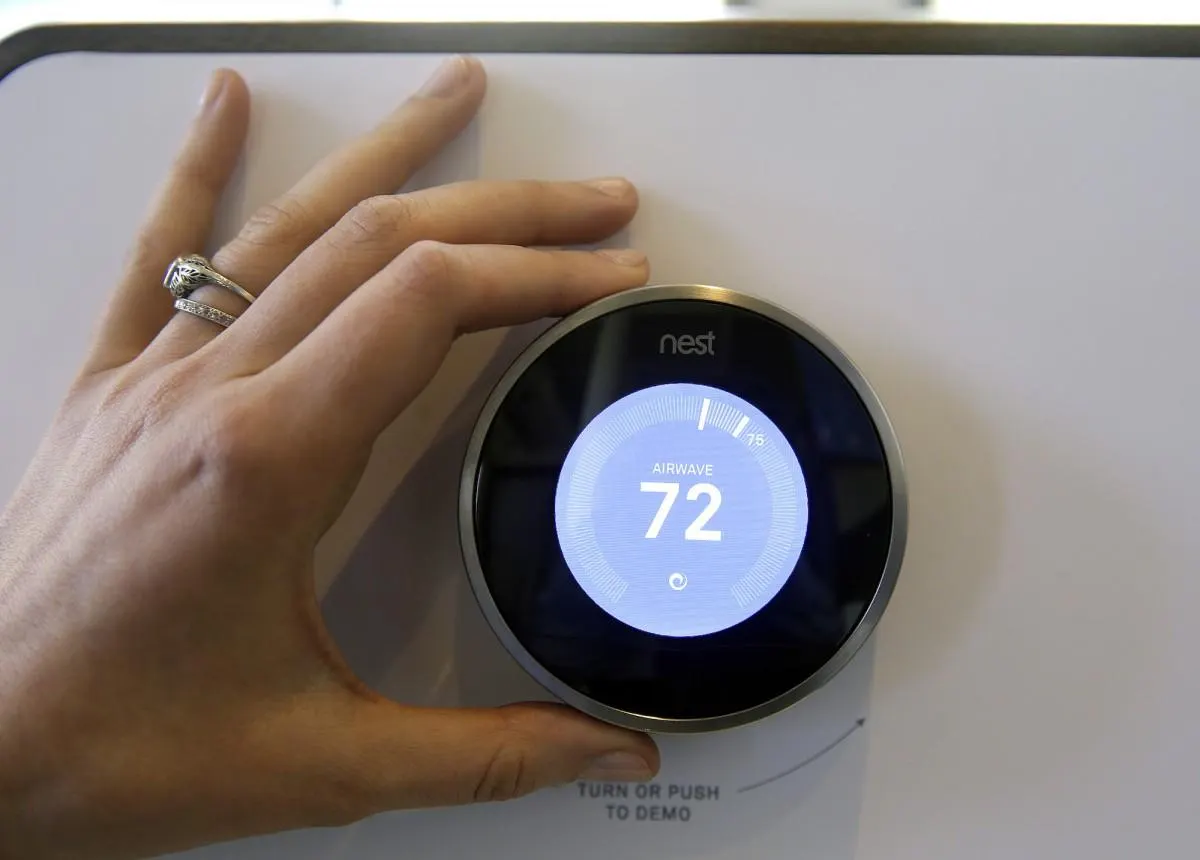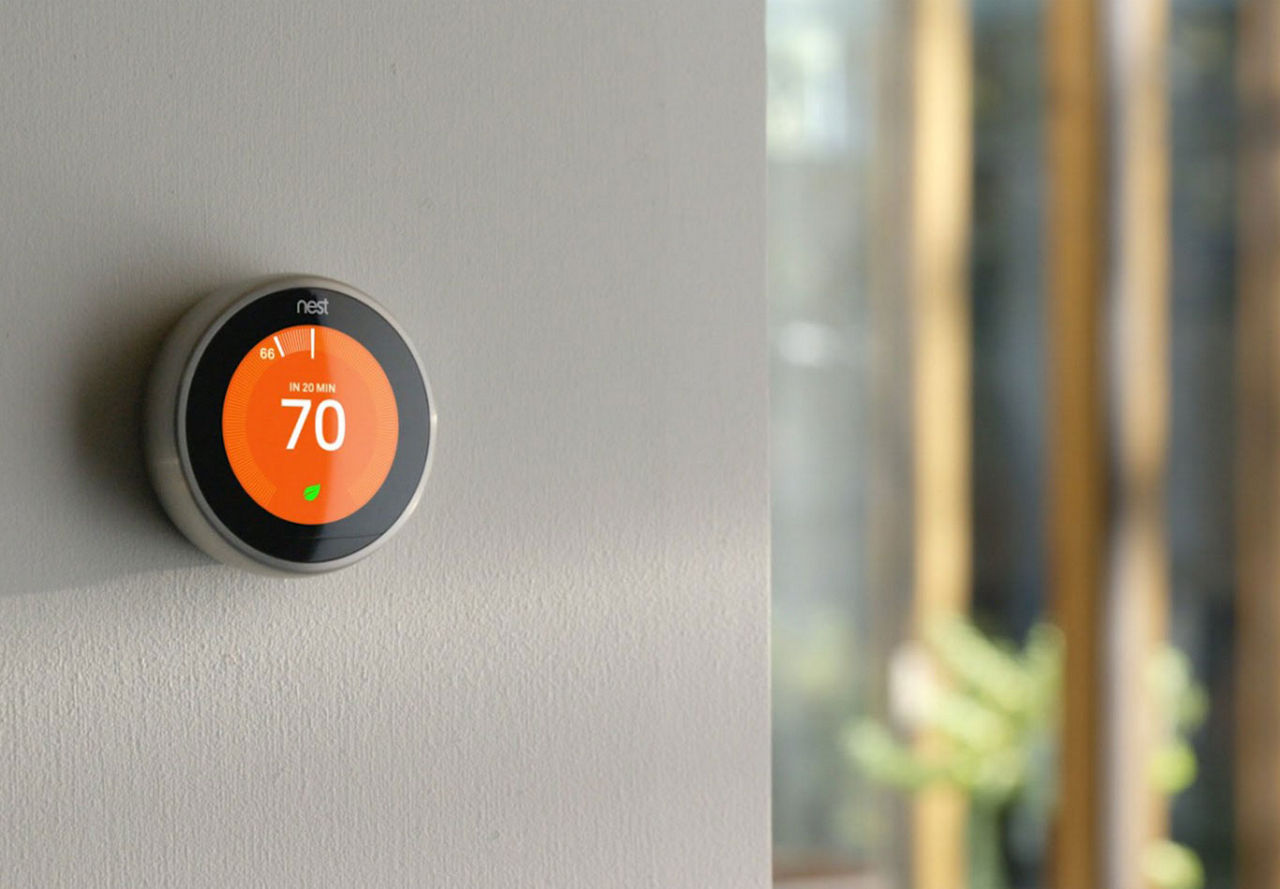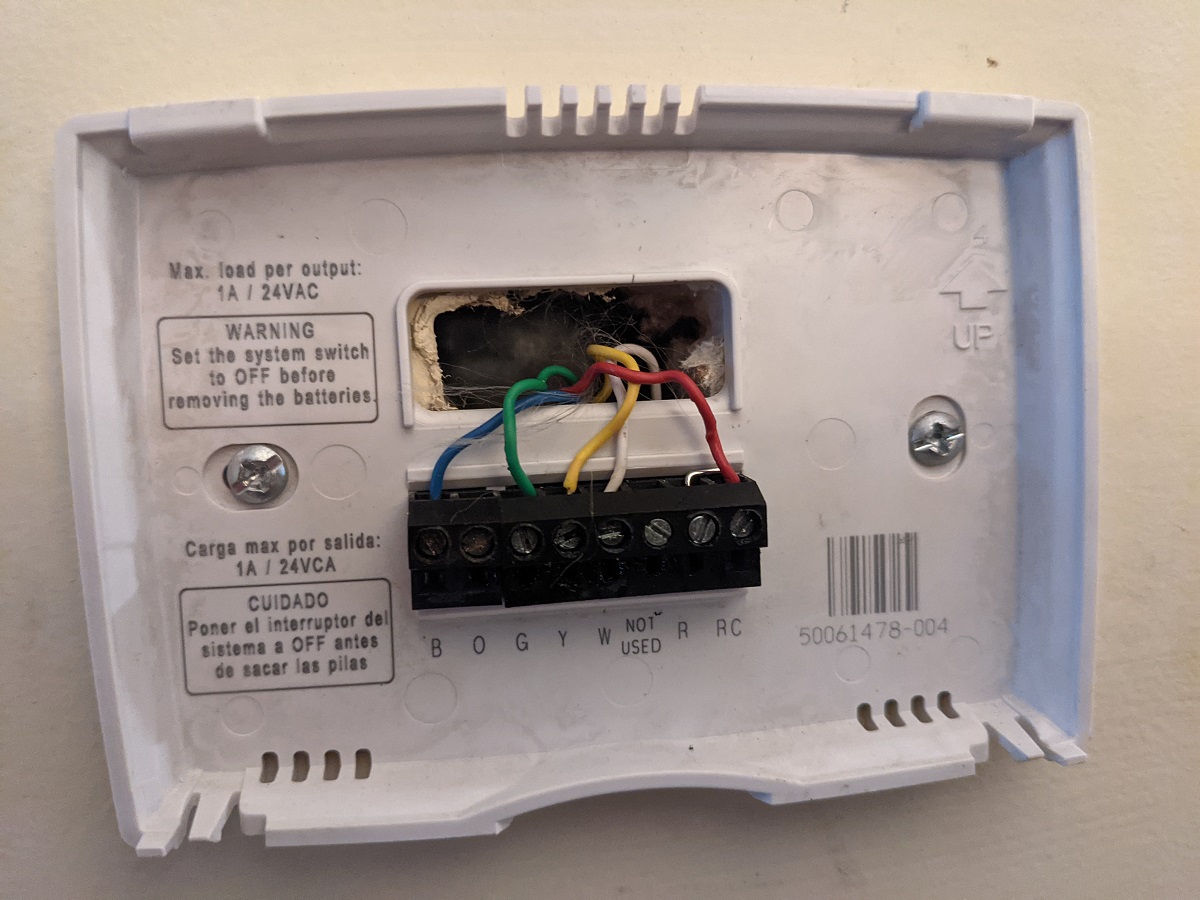Overview
A smart thermostat is a cutting-edge device that offers advanced features and technology to regulate the temperature of your home. It is designed to replace traditional thermostats and provide a range of benefits that enhance comfort, energy efficiency, and convenience.
Unlike conventional thermostats, which require manual adjustments and operate on strict schedules, smart thermostats are equipped with intelligent sensors, Wi-Fi connectivity, and learning algorithms. These features enable them to learn your preferences, adapt to your schedule, and optimize your home’s heating and cooling systems.
One of the key advantages of a smart thermostat is its ability to improve energy efficiency. By intelligently regulating the temperature based on occupancy, weather conditions, and your habits, it can help reduce energy waste and lower your utility bills. Smart thermostats also provide real-time energy usage data, allowing you to monitor and optimize consumption.
Remote access is another notable feature of smart thermostats. Through a dedicated mobile app or web interface, you can control and monitor the temperature of your home from anywhere. Whether you’re at work, on vacation, or simply lounging on the couch, you have full control over your HVAC system with just a few taps on your smartphone.
Smart thermostats take customization to a new level. They offer a range of personalized settings and features that cater to your specific needs. From setting different temperature zones in your home to creating customized schedules, you can tailor your heating and cooling system to suit your lifestyle and preferences.
Moreover, smart thermostats seamlessly integrate with other smart home devices and platforms. They can be connected to virtual assistants like Amazon Alexa or Google Assistant, allowing you to control your thermostat with voice commands. They can also interact with other smart devices, such as smart lights and sensors, to create a fully automated and interconnected home ecosystem.
One major attraction of smart thermostats is the potential for cost savings. By optimizing energy usage and reducing wasted heating or cooling, these devices can significantly lower your energy bills over time. The upfront cost of a smart thermostat may be higher than that of a traditional one, but the long-term savings can make it a cost-effective investment.
In terms of usability, smart thermostats are designed to be user-friendly and intuitive. They often feature touchscreen displays, simple interfaces, and easy-to-use mobile apps. Some models even offer advanced features like geofencing, which automatically adjusts the temperature based on your location, ensuring optimal comfort when you arrive home.
Lastly, smart thermostats have positive environmental impacts. By improving energy efficiency and reducing carbon emissions, they contribute to a greener and more sustainable future. With the option to monitor energy usage and make informed choices, homeowners can play an active role in reducing their environmental footprint.
Energy Efficiency
One of the key advantages of using a smart thermostat is the significant improvement it offers in energy efficiency. Unlike traditional thermostats that operate on fixed schedules, smart thermostats utilize advanced technology and learning algorithms to optimize your home’s heating and cooling systems.
Smart thermostats employ intelligent sensors to monitor various factors, such as occupancy, weather conditions, and even your daily routines. With this data, they can adapt and adjust the temperature settings accordingly, ensuring optimal comfort while minimizing energy waste.
For example, if you typically leave for work in the morning and return in the evening, a smart thermostat can learn this pattern and adjust the temperature lower during the hours you are away. It will then start warming up your home just in time for your arrival. This way, you can enjoy a comfortable living environment without wasting unnecessary energy when you’re not there.
Another energy-saving feature of smart thermostats is their ability to provide real-time energy usage data. Through the companion mobile app or web interface, you can easily monitor your energy consumption and make informed decisions about your heating and cooling preferences.
Furthermore, many smart thermostats offer insights and recommendations based on your usage patterns. They may suggest adjustments to your temperature settings or provide tips on how to reduce energy consumption. This helps you make more conscious decisions about your energy usage and contributes to long-term energy savings.
Smart thermostats also support advanced functionalities like geofencing. With geofencing, your thermostat can detect when you and your mobile device are within a specified distance from home. This triggers the system to adjust the temperature to your preferred setting automatically. By avoiding unnecessary heating or cooling when you’re not at home, you can minimize energy usage and reduce your utility bills.
In addition, smart thermostats often come with features like energy usage reports and history logs. These provide detailed insights into your energy consumption patterns, allowing you to identify areas where you can further optimize and save energy.
Overall, smart thermostats’ focus on energy efficiency not only benefits your wallet but also contributes to a more sustainable future. By reducing energy waste and carbon emissions, these devices help minimize the environmental impact of heating and cooling systems.
Remote Access
A significant advantage of smart thermostats is the capability of remote access. With a smart thermostat, you have the convenience of controlling and monitoring your home’s temperature settings from anywhere, using your smartphone, tablet, or computer.
Through a dedicated mobile app or web interface, you can easily connect to your smart thermostat and make adjustments with just a few taps. Whether you’re out for the day, on vacation, or simply snuggled up in bed, you have the power to regulate your home’s temperature remotely.
This remote access feature allows for greater flexibility and convenience in managing your HVAC system. If unexpected changes in your schedule occur, you can quickly modify the temperature settings to ensure a comfortable environment when you arrive home.
Additionally, remote access proves beneficial when you’re away for an extended period. For example, if you’re on vacation during the winter months, you can monitor and adjust the temperature to prevent freezing pipes or extreme temperature fluctuations in your home.
Moreover, remote access can help you save energy and reduce utility bills. If you forget to adjust the temperature before leaving the house, you can easily make the necessary changes even when you’re miles away. This prevents unnecessary heating or cooling and ensures energy efficiency.
Some smart thermostats also offer geofencing technology, which uses your smartphone’s GPS to detect when you leave or approach your home. This feature can automatically adjust the temperature settings based on your proximity, ensuring that your home is at the optimal temperature when you arrive.
Additionally, remote access allows you to receive real-time notifications and alerts. For example, if the temperature in your home drops below a certain threshold or if there’s a sudden HVAC system malfunction, you’ll be notified immediately. This enables you to take prompt action and avoid potential issues or damages.
Overall, the remote access feature of smart thermostats offers convenience, flexibility, and peace of mind. With just a few taps on your device, you have the power to control and monitor your home’s temperature settings no matter where you are.
Learning Capabilities
Smart thermostats are equipped with advanced learning capabilities that enable them to adapt to your lifestyle and preferences. These learning algorithms allow the thermostat to analyze your heating and cooling patterns, make intelligent adjustments, and provide a personalized experience.
One of the key learning capabilities of smart thermostats is their ability to understand your schedule. By monitoring your daily routines and occupancy patterns, the thermostat can learn when you typically leave the house and when you return. It can then adjust the temperature settings accordingly to optimize energy usage.
For example, if you regularly leave for work in the morning and return in the evening, the smart thermostat will learn this pattern over time. It will start adjusting the temperature lower when it detects your absence and begin warming up your home just before you arrive. This ensures that you always come back to a comfortable living environment without wasting energy while you’re away.
In addition to understanding your schedule, smart thermostats can also learn your temperature preferences. As you make manual adjustments to the thermostat, it takes note of these changes and identifies your comfort levels. Over time, it will automatically adjust the temperature to your preferred settings, minimizing the need for manual interventions.
Some smart thermostats go a step further and utilize advanced sensors to detect occupancy in different parts of your home. This allows them to create temperature zones, where different areas of your house can have individually controlled temperatures based on occupancy. This ensures personalized comfort throughout your home while optimizing energy consumption.
Furthermore, learning capabilities enable smart thermostats to adapt to changing weather conditions. By analyzing weather forecasts, the thermostat can adjust the temperature settings to compensate for outside temperature changes. This ensures optimal comfort inside, no matter how unpredictable the weather may be.
These learning capabilities not only enhance your comfort and convenience but also contribute to energy savings. By understanding your habits and adjusting the temperature settings accordingly, smart thermostats can optimize your HVAC system’s performance and reduce unnecessary energy consumption. This results in lower utility bills and a more eco-friendly home.
Overall, the learning capabilities of smart thermostats provide a seamless and personalized experience. By understanding your schedule, preferences, and even the weather, these devices can create a comfortable and energy-efficient home environment without requiring constant manual adjustments.
Customization Options
Smart thermostats offer a wide range of customization options that allow you to tailor your home’s heating and cooling settings to your specific preferences and needs. These customization features provide a personalized experience and enhance your overall comfort and energy efficiency.
One of the key customization options offered by smart thermostats is the ability to create personalized schedules. Through the dedicated mobile app or web interface, you can set specific temperature settings for different times of the day or days of the week. This flexibility allows you to optimize your HVAC system’s performance based on your daily routines and occupancy patterns.
For example, if your family spends most of the day outside the house during the week, you can set the thermostat to lower the temperature during those hours, saving energy and reducing costs. Similarly, you can program the thermostat to warm up the house just before you wake up in the morning or return home in the evening, ensuring a comfortable living environment.
Additionally, many smart thermostats offer the ability to create temperature zones within your home. This allows you to have different temperature settings in different areas or rooms, providing individualized comfort. For instance, you can set a higher temperature in the living room during the day and a cooler temperature in the bedrooms at night.
Some smart thermostats also provide advanced features like adaptive recovery. This feature learns how long it takes for your HVAC system to reach the desired temperature and adjusts the heating or cooling start time accordingly. This ensures that your home is at the optimal temperature at the specified time, eliminating the need to keep the system running for extended periods.
In addition to scheduling and temperature zoning, smart thermostats often allow for additional customization options like fan control, humidity adjustment, and even air filtration settings. These features enable you to fine-tune your home’s indoor environment to your liking and specific comfort requirements.
Furthermore, many smart thermostats offer intuitive and user-friendly interfaces that allow you to easily adjust settings and preferences. Touchscreen displays and mobile apps provide a seamless and interactive experience, making it effortless to customize your thermostat’s settings.
Overall, the customization options provided by smart thermostats ensure that your home is comfortable and suited to your preferences. The ability to create personalized schedules, temperature zones, and adjust various settings all contribute to energy efficiency, lower utility bills, and the overall control you have over your home’s climate.
Smart Integrations
Smart thermostats offer seamless integration with other smart home devices and platforms, allowing you to create a fully interconnected and automated home ecosystem. These integrations enhance the functionality and convenience of your smart thermostat while expanding its capabilities.
One of the most common smart integrations is with virtual assistants like Amazon Alexa, Google Assistant, or Apple Siri. By connecting your smart thermostat to a virtual assistant, you can control your thermostat using voice commands. This allows for hands-free operation and adds an extra level of convenience to managing your home’s temperature settings.
With just a simple voice command, you can adjust the temperature, set specific temperature schedules, or inquire about the current temperature inside your home. This integration makes controlling your smart thermostat even more effortless and accessible, as you can make changes without needing to physically interact with the thermostat or your mobile device.
In addition to virtual assistant integration, smart thermostats can also connect with other smart devices in your home. For example, you can link your thermostat to smart lights, smart locks, or smart security systems.
By integrating with smart lighting, your smart thermostat can work in tandem with your lighting system to create a more energy-efficient and comfortable environment. For example, when you leave the house, the thermostat can automatically adjust the temperature and turn off the lights to conserve energy. Similarly, when you return home, the thermostat can warm up the house and turn on the lights, welcoming you back.
Integrating your smart thermostat with smart locks and security systems allows for enhanced safety and security. For instance, if your security system detects that nobody is home, it can signal the thermostat to adjust the temperature settings accordingly, saving energy. Additionally, you can receive alerts on your mobile device if there’s a sudden change in temperature or if the thermostat malfunctions, providing peace of mind and ensuring prompt action.
Furthermore, smart thermostats can also integrate with weather stations or services. By connecting to a weather service, your smart thermostat can access accurate and up-to-date weather information. This allows it to adjust the temperature settings based on the current weather conditions, ensuring optimal comfort and energy efficiency.
Overall, smart integrations open up a world of possibilities and convenience. By connecting your smart thermostat to virtual assistants, lighting systems, security systems, or weather services, you can create a truly smart and automated home that adapts to your needs and preferences.
Cost Savings
Smart thermostats offer significant cost savings over time due to their energy-saving features and optimized temperature control. While the upfront cost of a smart thermostat may be higher than a traditional thermostat, the long-term savings make it a cost-effective investment.
One of the primary ways smart thermostats help save money is through improved energy efficiency. By intelligently regulating the temperature based on factors such as occupancy, weather conditions, and your habits, smart thermostats help reduce energy waste and optimize the use of heating and cooling systems.
For example, if you forget to adjust the temperature settings when leaving the house, a smart thermostat can detect your absence and automatically set the temperature to an energy-saving level. It can then adjust the temperature back to your preferred settings before you return home. This prevents unnecessary heating or cooling when you’re not there, saving energy and reducing your utility bills.
Smart thermostats also provide real-time energy usage data, allowing you to monitor and track your energy consumption. By having visibility into your energy usage, you can make informed decisions about your heating and cooling preferences and identify ways to further optimize energy efficiency.
Furthermore, some smart thermostats offer insights and recommendations to help you save energy and lower costs. They may suggest adjustments to your temperature settings, offer energy-saving tips, or provide analysis of your energy consumption patterns. Implementing these suggestions can lead to additional savings over time.
In addition to energy savings, smart thermostats offer cost savings through their ability to prevent wasted heating or cooling. With features such as geofencing, the thermostat can detect when you are away from home and adjust the temperature accordingly. This prevents unnecessary heating or cooling, leading to lower energy consumption and reduced utility bills.
Moreover, many utility companies offer energy-saving programs and rebates for homeowners who install smart thermostats. Taking advantage of these programs can lead to additional savings on your investment.
Overall, smart thermostats provide significant cost savings through improved energy efficiency, reduced wasted heating or cooling, and potential utility company incentives. While the initial cost may be higher, the long-term savings make smart thermostats a wise financial choice.
Ease of Use and Convenience
Smart thermostats are designed with ease of use and convenience in mind, providing a seamless and user-friendly experience for homeowners. These devices offer intuitive interfaces, mobile apps, and various features that simplify temperature control and enhance convenience.
One of the primary advantages of smart thermostats is their user-friendly interface. Many models come with touchscreen displays that make it easy to navigate and adjust settings directly on the thermostat itself. The intuitive interface ensures that even technologically inexperienced users can easily operate and make changes to the temperature settings.
In addition to the physical interface, smart thermostats also offer mobile apps that allow you to control and monitor your HVAC system from anywhere using your smartphone or tablet. The apps provide a convenient way to make adjustments, create schedules, and access real-time information about your home’s temperature and energy usage.
This remote accessibility adds another layer of convenience, allowing you to control the thermostat when you’re not at home. Whether you’re at work, running errands, or on vacation, you have full control over your home’s temperature, ensuring comfort as soon as you walk through the door.
Some smart thermostats also offer geofencing technology, which uses your smartphone’s GPS to detect your location. This feature enables the thermostat to automatically adjust the temperature settings based on your proximity to home. For example, as you leave the house, the thermostat can lower the temperature to save energy. When it detects your return, it can raise the temperature to your desired comfort level. This hands-free automation adds to the convenience and eliminates the need for manual adjustments.
Furthermore, many smart thermostats come equipped with learning capabilities. These devices can learn your habits, routines, and temperature preferences over time. With this knowledge, the thermostat can automatically adjust the temperature settings to match your comfort needs without requiring constant manual intervention.
Integration with virtual assistants, such as Amazon Alexa or Google Assistant, further enhances the convenience and ease of use. With voice commands, you can control your thermostat, set specific temperature schedules, or inquire about the current temperature without having to physically interact with the thermostat or your mobile device.
Overall, smart thermostats prioritize ease of use and convenience. From their intuitive interfaces and mobile apps to remote accessibility and integration with virtual assistants, these devices offer a user-friendly experience that enhances your control over your home’s temperature and adds convenience to your daily life.
Compatibility with HVAC Systems
Smart thermostats are designed to be compatible with a wide range of HVAC (Heating, Ventilation, and Air Conditioning) systems, making them suitable for most homes. Whether you have a traditional furnace and central air conditioning or a more complex HVAC system, smart thermostats can integrate seamlessly.
One of the key factors to consider when choosing a smart thermostat is its compatibility with your existing HVAC system. Most smart thermostats are designed to work with standard 24-volt systems, which are common in residential homes. These systems include forced-air systems, heat pumps, and central heating and cooling units.
For homes with multi-stage heating or cooling systems, smart thermostats often offer compatibility as well. These thermostats can control different stages of heating or cooling, optimizing energy efficiency and providing precise temperature control.
Some smart thermostats also support zoned HVAC systems, where different areas of the home can have individual temperature control. These systems utilize separate thermostats and dampers to control airflow and temperature in specific zones. Smart thermostats can easily integrate with these zoned systems, allowing for personalized temperature settings in different parts of the house.
In addition, smart thermostats are compatible with a variety of fuel types, including gas, electric, and oil heating systems. They can effectively regulate the temperature and optimize energy usage regardless of the fuel source.
Before purchasing a smart thermostat, it is recommended to check the compatibility requirements specified by the manufacturer. They typically provide a compatibility guide or offer an online tool to determine if the thermostat will work with your specific HVAC system.
Installation of a smart thermostat may require a C-wire (common wire) connection, which provides continuous power to the thermostat. However, some smart thermostats are designed to work without a C-wire or offer alternative power solutions, such as utilizing power from the HVAC system’s control panel.
In cases where the wiring or compatibility may be more complex, it is advisable to consult a professional HVAC technician or electrician for assistance. They can assess your existing system and help ensure a seamless installation and integration of the smart thermostat.
Overall, smart thermostats offer compatibility with a wide range of HVAC systems, making them suitable for most homes. However, it is essential to confirm compatibility requirements before purchasing and consider professional assistance if needed for proper installation and integration.
Environmental Benefits
Smart thermostats provide significant environmental benefits by promoting energy efficiency, reducing carbon emissions, and fostering a greener living environment.
One of the primary environmental advantages of smart thermostats is their ability to improve energy efficiency. By intelligently regulating the temperature based on factors like occupancy, weather conditions, and user preferences, these devices minimize energy waste. They ensure that heating and cooling systems only operate when necessary, optimizing energy usage and reducing overall energy consumption.
By reducing energy consumption, smart thermostats directly contribute to lowering carbon emissions. Heating and cooling systems are major contributors to greenhouse gas emissions, which contribute to climate change. By optimizing these systems’ performance and reducing energy waste, smart thermostats help to mitigate the environmental impact associated with heating and cooling.
In addition, many smart thermostats provide real-time energy usage data, allowing homeowners to monitor and track their energy consumption. This transparency empowers individuals to make informed decisions about their energy usage, identify areas of improvement, and actively work towards reducing their carbon footprint.
Furthermore, the learning capabilities of smart thermostats enable them to adapt to changing weather conditions. By accessing weather forecasts, the thermostat can proactively adjust temperature settings to ensure optimal comfort while conserving energy. This dynamic response to weather conditions helps to reduce unnecessary energy usage and further minimizes environmental impact.
Another environmental benefit of smart thermostats is their potential to encourage more sustainable lifestyles. By providing insights, energy-saving suggestions, and customizable features, these devices promote conscious energy consumption practices. Homeowners can integrate energy-efficient habits into their daily routines and actively participate in reducing their environmental footprint.
Moreover, smart thermostats support efforts towards a greener future by integrating with renewable energy sources. Many systems allow homeowners to connect their smart thermostat to solar panels or other renewable energy systems. By leveraging clean and renewable energy, the carbon footprint associated with heating and cooling is further reduced.
Overall, smart thermostats contribute to a more sustainable and environmentally friendly world by promoting energy efficiency, reducing carbon emissions, and fostering conscious energy consumption habits. By implementing these devices, homeowners can play an active role in protecting the environment and creating a greener future.







